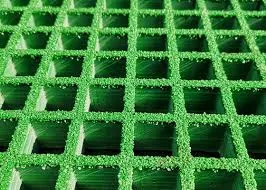
-
 Afrikaans
Afrikaans -
 Albanian
Albanian -
 Amharic
Amharic -
 Arabic
Arabic -
 Armenian
Armenian -
 Azerbaijani
Azerbaijani -
 Basque
Basque -
 Belarusian
Belarusian -
 Bengali
Bengali -
 Bosnian
Bosnian -
 Bulgarian
Bulgarian -
 Catalan
Catalan -
 Cebuano
Cebuano -
 China
China -
 China (Taiwan)
China (Taiwan) -
 Corsican
Corsican -
 Croatian
Croatian -
 Czech
Czech -
 Danish
Danish -
 Dutch
Dutch -
 English
English -
 Esperanto
Esperanto -
 Estonian
Estonian -
 Finnish
Finnish -
 French
French -
 Frisian
Frisian -
 Galician
Galician -
 Georgian
Georgian -
 German
German -
 Greek
Greek -
 Gujarati
Gujarati -
 Haitian Creole
Haitian Creole -
 hausa
hausa -
 hawaiian
hawaiian -
 Hebrew
Hebrew -
 Hindi
Hindi -
 Miao
Miao -
 Hungarian
Hungarian -
 Icelandic
Icelandic -
 igbo
igbo -
 Indonesian
Indonesian -
 irish
irish -
 Italian
Italian -
 Japanese
Japanese -
 Javanese
Javanese -
 Kannada
Kannada -
 kazakh
kazakh -
 Khmer
Khmer -
 Rwandese
Rwandese -
 Korean
Korean -
 Kurdish
Kurdish -
 Kyrgyz
Kyrgyz -
 Lao
Lao -
 Latin
Latin -
 Latvian
Latvian -
 Lithuanian
Lithuanian -
 Luxembourgish
Luxembourgish -
 Macedonian
Macedonian -
 Malgashi
Malgashi -
 Malay
Malay -
 Malayalam
Malayalam -
 Maltese
Maltese -
 Maori
Maori -
 Marathi
Marathi -
 Mongolian
Mongolian -
 Myanmar
Myanmar -
 Nepali
Nepali -
 Norwegian
Norwegian -
 Norwegian
Norwegian -
 Occitan
Occitan -
 Pashto
Pashto -
 Persian
Persian -
 Polish
Polish -
 Portuguese
Portuguese -
 Punjabi
Punjabi -
 Romanian
Romanian -
 Russian
Russian -
 Samoan
Samoan -
 Scottish Gaelic
Scottish Gaelic -
 Serbian
Serbian -
 Sesotho
Sesotho -
 Shona
Shona -
 Sindhi
Sindhi -
 Sinhala
Sinhala -
 Slovak
Slovak -
 Slovenian
Slovenian -
 Somali
Somali -
 Spanish
Spanish -
 Sundanese
Sundanese -
 Swahili
Swahili -
 Swedish
Swedish -
 Tagalog
Tagalog -
 Tajik
Tajik -
 Tamil
Tamil -
 Tatar
Tatar -
 Telugu
Telugu -
 Thai
Thai -
 Turkish
Turkish -
 Turkmen
Turkmen -
 Ukrainian
Ukrainian -
 Urdu
Urdu -
 Uighur
Uighur -
 Uzbek
Uzbek -
 Vietnamese
Vietnamese -
 Welsh
Welsh -
 Bantu
Bantu -
 Yiddish
Yiddish -
 Yoruba
Yoruba -
 Zulu
Zulu
grp fitting
Exploring GRP Fitting Techniques and Applications
Glass Reinforced Plastic (GRP), commonly known as fiberglass, has gained immense popularity in various industries due to its lightweight, corrosion-resistant, and strong characteristics. One of the crucial aspects of working with GRP is the fitting process, which involves connecting different components made of fiberglass. This article delves into the techniques, methodologies, and applications of GRP fitting, highlighting its significance in engineering and manufacturing.
Understanding GRP
Before diving into GRP fitting, it’s essential to understand what GRP is and its properties. GRP is a composite material made from a polymer matrix reinforced with glass fibers. This combination results in a material that exhibits impressive strength, durability, and resistance to environmental factors like moisture and chemicals. The versatility of GRP has made it a popular choice across various sectors, including marine, automotive, construction, and electrical.
The Importance of GRP Fitting
Fitting components made from GRP together requires precise techniques to ensure structural integrity and durability. Poor fitting can lead to leaks, weaknesses, and even catastrophic failures, especially in load-bearing applications. Therefore, mastering GRP fitting techniques is crucial for engineers and manufacturers working with this material.
Techniques in GRP Fitting
1. Adhesive Bonding One of the most common methods for GRP fitting is adhesive bonding. High-performance adhesives are used to create a strong bond between two GRP components. This method not only provides a seamless appearance but also maintains the material's corrosion resistance properties. When selecting an adhesive, it is crucial to consider the environmental conditions the bonded components will face, as different adhesives have varying resistance to temperature, humidity, and chemical exposure.
grp fitting

2. Mechanical Fastening Another prevalent technique is mechanical fastening, which involves using bolts, screws, or rivets to join GRP components. Though it may seem straightforward, proper alignment and torque specifications are essential to ensure a secure fit without compromising the structural integrity of the material. This method is often favored for applications where disassembly may be required for maintenance or repair.
3. Cementing and Sealing In applications where a watertight connection is necessary, methods such as cementing and sealing are often employed. Specialized sealants designed for GRP can create an effective barrier against water ingress, making them suitable for use in marine environments or plumbing systems. It is important to select the right sealant to ensure compatibility with GRP and the specific conditions it will face.
4. Thermal Joining Although less common, thermal joining techniques, such as welding, can be applied to certain types of GRP materials. This process involves heating the edges of the GRP components to a temperature where they soften and can be fused together. While not widely used due to the nature of the material, it can be effective for specific applications where traditional methods do not suffice.
Applications of GRP Fitting
The applications of GRP fitting are vast and varied. In the marine industry, GRP is used to manufacture boats and yachts, where fitting components securely is essential to ensure buoyancy and structural integrity. In construction, GRP panels serve as roofing and facades, where proper fitting techniques play a crucial role in weather resistance and insulation. Additionally, in the electrical sector, GRP enclosures provide protection for sensitive equipment, necessitating precise fitting to maintain safety and performance standards.
Conclusion
GRP fitting is a critical skill that combines art and science, demanding a deep understanding of materials and engineering principles. As industries continue to innovate and adopt GRP for its myriad benefits, the techniques and methodologies surrounding its fitting will evolve, paving the way for new applications and improved designs. Professionals in the field must stay informed about the latest advancements in adhesive technologies, mechanical fastening solutions, and best practices in GRP fitting to ensure they deliver safe, reliable, and efficient solutions in their projects.









